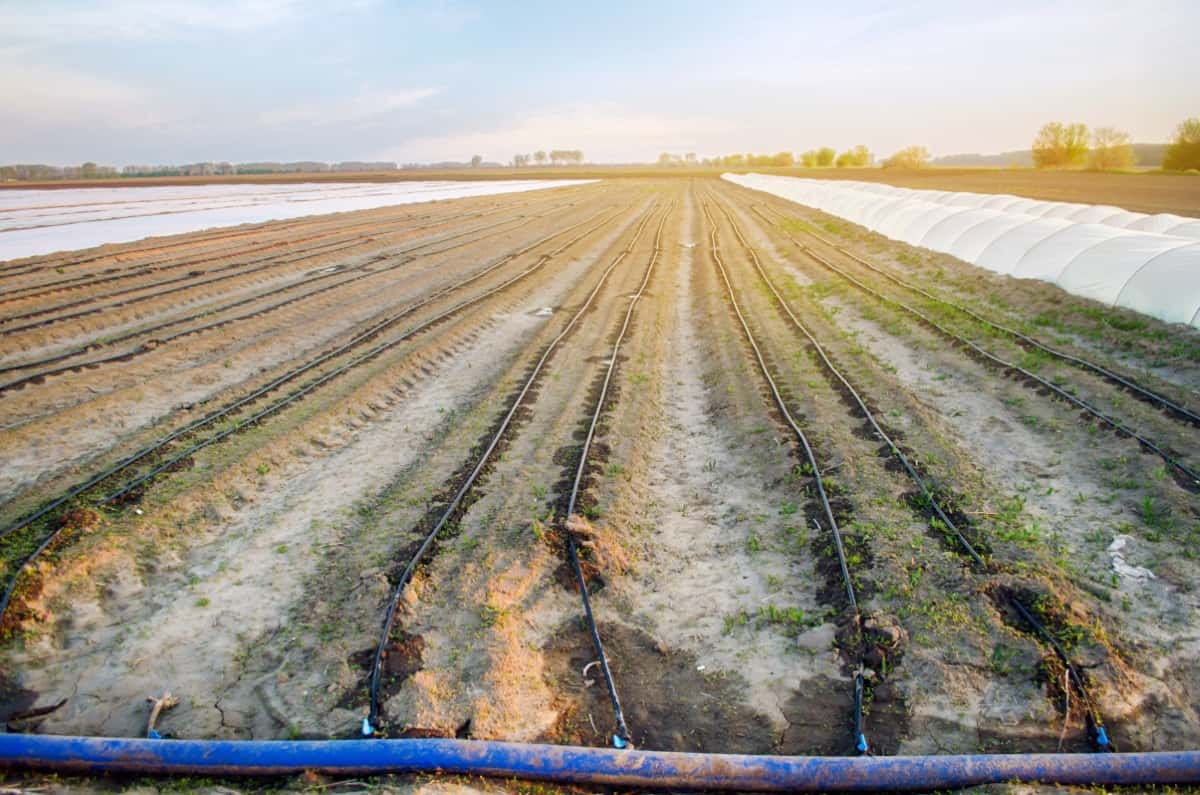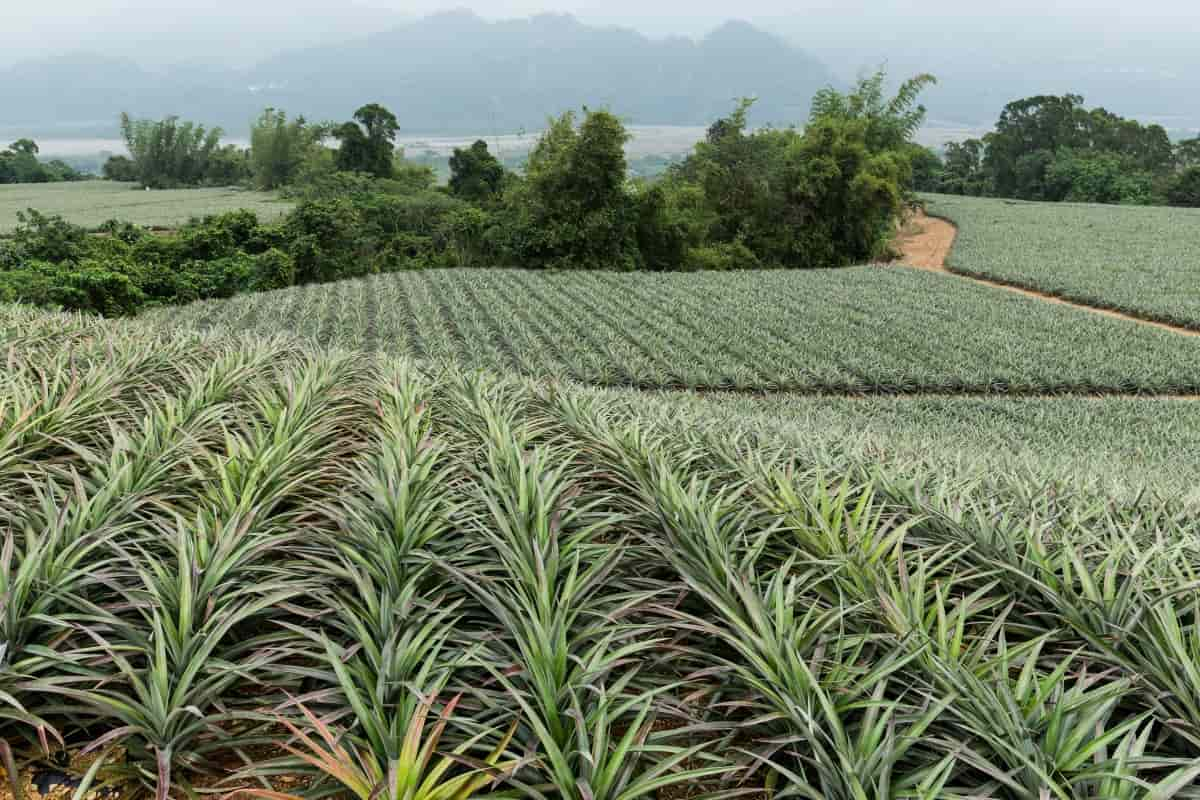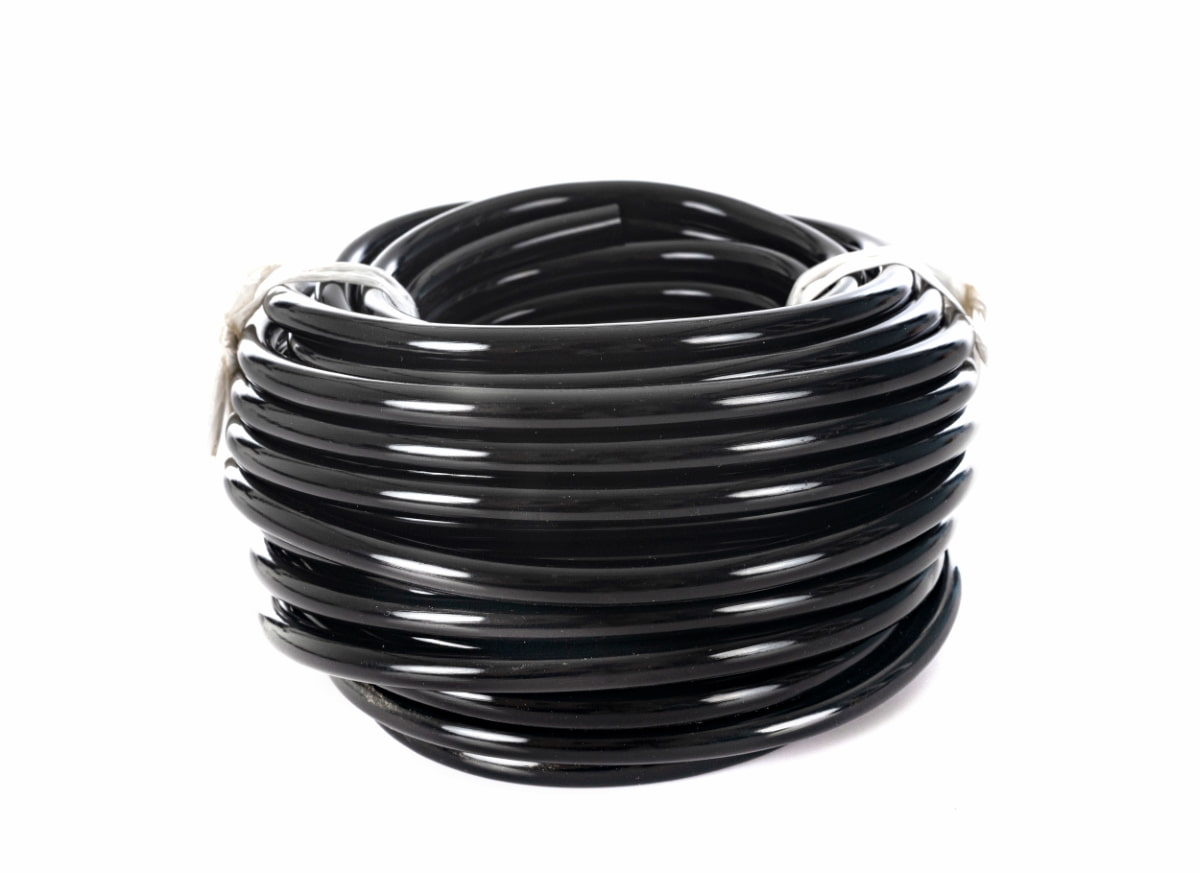The initial investment for drip irrigation in a pineapple plantation involves various components, such as drip lines, emitters, filters, pumps, and controllers. The cost varies based on factors like the size of the plantation, topography, and water source. On average, the cost of drip irrigation installation per acre for pineapple cultivation can range from Rs. 90,000 to Rs. 1,50,000. This includes the procurement and installation of the necessary equipment.

Drip irrigation offers precise water application, reducing water wastage and ensuring optimal moisture levels for pineapple plants. The investment is justified by increased yield, water efficiency, and overall sustainability. Pineapple farmers must consider the long-term benefits and potential subsidy programs that may alleviate the upfront costs.
Cost of Drip Irrigation Per Acre for Pineapple
Evaluate the Cost of Drip Lines and Emitters for Pineapple Fields
The cost breakdown for drip irrigation components in pineapple fields includes drip lines and emitters. Drip lines, typically made of durable materials like polyethylene, cost around Rs. 10,000 to Rs. 20,000 per acre. Emitters responsible for releasing water directly to the plants are priced at approximately Rs. 5,000 to Rs. 10,000 per acre.
While these costs form a significant part of the initial investment, the efficiency of water distribution and improved pineapple growth make them a valuable investment for farmers. Additionally, government subsidies and agricultural support programs may further reduce the financial burden on farmers looking to adopt drip irrigation for their pineapple plantations, promoting sustainable and efficient farming practices.
Analyze the Expense of Filters and Pressure Regulators in Drip Irrigation Systems
In a drip irrigation system for pineapple cultivation, filters and pressure regulators play a crucial role in maintaining the efficiency of water delivery to plants. Filters prevent clogging of emitters by removing debris and sediments from the water, ensuring a consistent flow. The cost of filters for an acre can range from Rs. 5,000 to Rs. 15,000. Pressure regulators, essential for maintaining optimal pressure throughout the system, come at a similar cost range.
While these components contribute to the overall expense of drip irrigation, their inclusion is fundamental for system longevity and efficiency. Investing in quality filters and pressure regulators reduces maintenance costs and enhances the system’s reliability, ultimately benefiting pineapple farmers by ensuring consistent water supply and plant health.
Estimate the Cost of Automation and Control Systems in Drip Irrigation for Pineapple
Automation and control systems add a layer of precision and convenience to drip irrigation in pineapple plantations. These systems include timers, sensors, and controllers that automate the irrigation schedule and monitor soil moisture levels. The cost of implementing automation in a drip irrigation setup can range from Rs. 20,000 to Rs. 50,000 per acre.
While the cost may seem substantial, the long-term advantages include optimized water usage, reduced labor requirements, and enhanced crop management. Farmers can remotely control and monitor irrigation, ensuring that pineapple plants receive water at the most opportune times. Consideration of these costs should be coupled with the potential productivity gains and water savings, as well as investing in automation, which is a strategic move for sustainable and efficient pineapple cultivation.
Assess the Price of Pumps and Pumping Stations for Drip Irrigation in Pineapple Farming
Pumps and pumping stations are critical components in a drip irrigation system for pineapple farming, responsible for delivering water from the source to the field. The cost of pumps can vary based on factors like capacity and power. On average, the price of a pump suitable for an acre of pineapple plantation ranges from Rs. 30,000 to Rs. 60,000.
In case you missed it: 1-Acre Blackcurrant Farming Project Report: Economics for Profit and Cost

Additionally, pumping stations, which may include pipes, fittings, and installation, contribute to the overall expense. Invest in a reliable and efficient pump for consistent water supply to the drip irrigation system. The upfront cost reflects the quality and capacity needed to meet the water requirements of pineapple plants, ensuring optimal growth and yield.
Explore the Cost of Fertilizer and Nutrient Injection Systems in Drip Irrigation for Pineapple
Fertilizer and nutrient injection systems enhance the effectiveness of drip irrigation by delivering essential nutrients directly to the pineapple plants. The cost of these systems varies depending on factors such as the type of fertilizers used and the complexity of the injection setup. On average, the cost ranges from Rs. 10,000 to Rs. 25,000 per acre.
While this adds to the initial investment, the precision in nutrient delivery improves pineapple plant health and can potentially lead to increased yields. Farmers should consider the long-term benefits of enhanced nutrient management when evaluating the cost of fertilizer and nutrient injection systems in drip irrigation for pineapple cultivation.
Calculate the Labor and Installation Costs for Drip Irrigation in Pineapple Plantations
Labor and installation costs for drip irrigation in pineapple plantations involve expenses related to system setup, piping, and emitter placement. The cost can range from Rs. 15,000 to Rs. 30,000 per acre, depending on factors like the complexity of the terrain and the size of the plantation. Skilled labor for the proper installation of the drip irrigation system, ensuring efficient water distribution.
While the initial labor and installation costs contribute to the overall investment, the long-term benefits of water savings and increased productivity make it a worthwhile expenditure for pineapple farmers. Additionally, government subsidies and support programs may help offset some of these costs, promoting the adoption of sustainable irrigation practices.
Factor the Maintenance and Repair Expenses for Drip Irrigation Systems in Pineapple Farming
Maintenance and repair expenses are important considerations for the sustainable operation of drip irrigation systems in pineapple farming. Annual maintenance costs for an acre of pineapple plantation typically range from Rs. 5,000 to Rs. 15,000. This includes periodic checks, cleaning of filters, and replacement of damaged or worn-out components such as emitters and tubing.
In case you missed it: Organic Farming Costs Per Acre: Comparative Analysis with Conventional Farming Costs

It is essential to perform regular maintenance to ensure the efficient functioning of the system and prevent potential issues that could affect crop yield. Proactive monitoring and timely repairs can minimize downtime and extend the overall lifespan of the drip irrigation infrastructure. Farmers should budget for these ongoing expenses to optimize the long-term benefits of their investment in drip irrigation for pineapple cultivation.
Energy Costs Associated with Drip Irrigation in Pineapple Cultivation
Energy costs are a vital component of the operational expenses in drip irrigation for pineapple cultivation. The energy requirements are primarily associated with running pumps that deliver water through the drip system. Depending on the pump’s capacity and local electricity rates, the annual energy costs for an acre can range from Rs. 10,000 to Rs. 20,000.
Efforts to minimize energy costs can include selecting energy-efficient pump models, optimizing irrigation schedules, and exploring renewable energy sources. The consideration of energy costs is essential for farmers to assess the overall operational expenses and make informed decisions to enhance the economic viability of drip irrigation in pineapple farming.
Government Subsidy for Pineapple Drip Irrigation
Government subsidies can significantly alleviate the financial burden of adopting drip irrigation in pineapple farming. Many governments offer subsidies and financial assistance programs to encourage farmers to adopt water-efficient and sustainable irrigation practices. Subsidies may cover a portion of the initial investment costs, including equipment purchase, installation, and infrastructure development.
Farmers should actively explore and engage with agricultural extension services or relevant government agencies to understand the available subsidy programs. The subsidy amount can vary, but it often represents a substantial portion of the total investment, making drip irrigation more accessible and economically viable for pineapple farmers. Government support underscores the commitment to promoting water-efficient and sustainable agricultural practices, benefiting both farmers and the environment.
Compare the Overall Operational Costs of Drip Irrigation vs. Traditional Methods in Pineapple Farming
Drip irrigation and traditional irrigation methods have distinct operational cost profiles in pineapple farming. Drip irrigation’s precision and efficiency often lead to lower overall operating costs compared to traditional methods. While drip irrigation requires a higher initial investment in equipment, the long-term benefits include reduced water consumption, lower energy costs, and minimized labor requirements for manual watering.
In case you missed it: Success Story of a Geranium Farmer Who Earns 2 to 3 Lakhs Per Acre in India

Traditional methods, such as flood or furrow irrigation, may incur higher labor costs, increased water usage, and potential nutrient wastage. Moreover, drip irrigation’s ability to deliver water and nutrients directly to the plant roots enhances resource utilization, contributing to improved yields and overall cost-effectiveness over time. Despite the upfront investment, the efficiency gains and potential government subsidies make drip irrigation a financially prudent and sustainable choice for pineapple farmers seeking to optimize operational costs and enhance productivity.
Conclusion
In conclusion, the cost analysis of drip irrigation per acre for pineapple plantations underscores the significance of the initial investment, encompassing various components. Government subsidies can play a pivotal role in offsetting these costs, promoting sustainable and water-efficient agricultural practices. While the upfront expenses may seem substantial, the long-term benefits in terms of increased yield, water efficiency, and overall sustainability make drip irrigation a prudent and economically viable choice for pineapple farmers.
- Feed Your Flock for Less: Top 10 Tips to Save on Chicken Feed
- Ultimate Guide to Ossabaw Island Hog: Breeding, Raising, Diet, and Care
- Hatching Answers: The Top 10 Reasons Your Chickens Aren’t Laying Eggs
- Eggs and Economics: Breaking Down the Cost of Raising Backyard Chickens
- Defend Your Greens: Proven Methods to Keep Iguanas Out of Your Garden
- Ultimate Guide to Cinnamon Queen Chicken: A Comprehensive Guide for Beginners
- Ultimate Guide to California Tan Chicken: Breeding, Raising, Diet, Egg-Production and Care
- Ultimate Guide to Marsh Daisy Chicken: Breeding, Raising, Diet, and Care
- 10 Types of Chicken Farming Businesses You Can Start for Profits